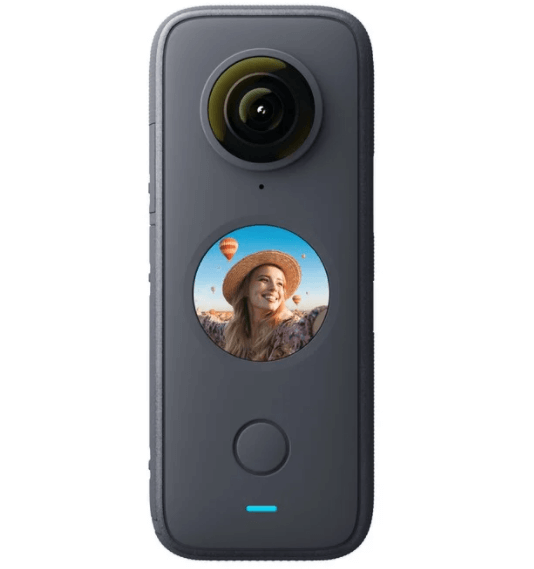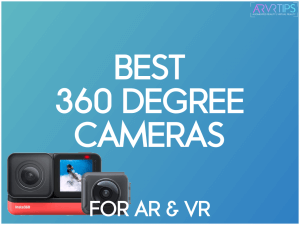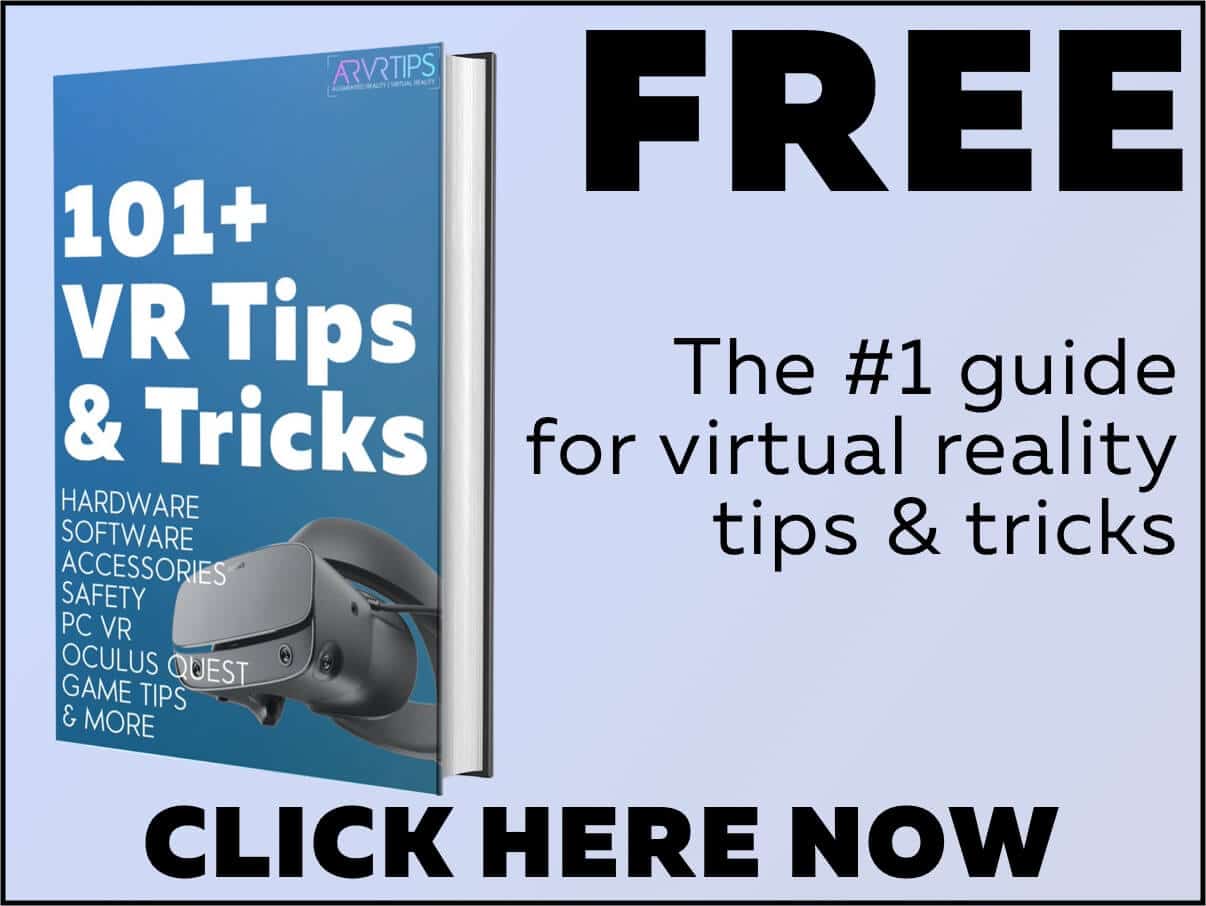A 360 degree camera can be used to create immersive photos and video for virtual reality, Youtube, and Facebook. In this guide, we’ll tell you the best 360 degree cameras for personal and business used.
These cameras are used in a number of ways:
- virtual tours
- retail store walkthroughs
- showcasing landmarks
- tourist attractions
NEW: Check out the brand new Insta360 X4 below!
Studies show that companies who have 360 degree content available for potential customers have a higher engagement and buy rate. After you our done, check out how easy it is to load and watch 360 videos on your VR headset.
Let’s check out the list!
What is the Best 360 Degree Camera for VR?
Insta360 X4 (Best Video Quality)
No products found.
The Insta360 X4 has completely revolutionized my approach to capturing action videos. As an avid BMX rider, I’ve tested numerous cameras over the years, but the X4 stands out as a true game changer.
High Image Quality
The image quality is outstanding! The X4 shoots in 8K30fps, 5K60fps, 4K100fps, plus 72MP 360 photos. The video resolution provides sharp and vibrant images, and the details are incredible. With Active HDR, shots stay color-accurate even during intense action.
Versatility
The X4’s versatility is a standout feature. It doubles as a traditional wide-angle camera with the Single Lens Mode, shooting up to 4K60fps. This means you can easily switch between capturing immersive 360 VR content and traditional wide-angle shots, giving you the power to adapt to different shooting scenarios.
One of the most interesting features of the X4 is the ‘bullet time’ mode, which allows you to swing the camera around above you to generate a slow-motion effect, similar to what was seen in the movie The Matrix.
Durability
The X4’s durability is top-notch, giving you the confidence to take it on any adventure. The upgraded lens guards are easy to apply and remove, ensuring the lens stays scratch-free during intense shots. The camera’s rugged build can withstand bumps and hardcore action, making it a reliable companion.
The improved battery life, capturing up to 135 minutes on one charge, and its waterproof feature, up to 10 meters out of the box, further enhance its durability and usability.
PROS
- 8K 360° video support with Active HDR
- FlowState stabilization for ultra-smooth footage
- Versatile shooting modes, including 4K60fps wide-angle
- Rugged build with easy-to-apply lens guards
- Improved battery life with fast charging
CONS
- Some users might find the 2.5” screen small for previewing shots
Click here to buy the Insta360 X4
Insta360 One X3 (Best For VR Content Creation)
No products found.
I’ve used the Insta360 One X3 for mountain biking, skiing, and hiking with my kids, and it’s been fantastic. The ability to capture images and everything around you in 360 degrees makes it stand out from traditional action cameras.
Video Quality
The X3 captures 5.7K 360 Active HDR video, ensuring I never miss the action. I love that I can edit everything in post-production and quickly use my phone to make a video. The learning curve to make a decent video isn’t too bad, and I still have tons of features to explore.
The image quality is fantastic, thanks to the dual 1/2” 48MP sensors. They pack in more pixels for clarity and detail, even in low light. I can capture 72MP photos and 8K timelapses, which look amazing. The 4K Single-Lens Mode allows me to shoot wide-angle footage with maximum resolution, making my first-person view footage look incredible.
Artificial Intelligence
The easy reframing tools in the AI-powered Insta360 app let me choose my favorite angle after the fact, which is perfect for creating engaging 360 VR content.
Stabilization is top-notch with FlowState Stabilization and 360 Horizon Lock. These features ensure my videos are incredibly smooth, no matter how intense the action gets. This is especially useful for creating immersive 360 VR videos where stable footage is crucial.
Display
One of my favorite things about the X3 is its big display. The 2.29-inch screen makes it very easy to control the camera, change settings, preview shots, and see what I’m filming. The display is bright and responsive, enhancing the overall user experience.
The X3 has an impossible third-person view with the invisible selfie stick effect. This means the selfie stick doesn’t appear in my shots, creating drone-like footage and unique perspectives. It’s incredibly versatile, and I can easily mount it in all types of places thanks to its ¾” hole on the bottom.
PROS
- 5.7K 360 Active HDR video with easy reframing tools
- Dual 1/2” 48MP sensors for greater clarity and detail
- FlowState Stabilization and 360 Horizon Lock for smooth videos
- Big, bright 2.29-inch display for easy control and preview
- Invisible selfie stick effect for unique perspectives
CONS
- Some features may have a learning curve for new users
- Short battery life compared to other models
Click here to buy the Insta360 One X3
Ricoh Theta X (Low Light Performance)
No products found.
I recently tried out the Ricoh Theta X, and it has impressed me with its capabilities, especially when creating immersive 360-degree VR content. As someone who loves capturing high-quality visuals, I know this camera has a lot to offer.
High Resolution Images
The first thing that stands out is the 60MP still image shooting. With the ability to record natural 360-degree images in up to approximately 60MP, the Theta X produces incredibly detailed and high-resolution photos. This is perfect for creating virtual reality experiences where image quality is paramount.
High Quality Video
The 5.7K video shooting with stabilization is another major highlight. The improved image stabilization ensures that my spherical videos are smooth and vivid, even at 5.7K and 30fps. This makes Theta X ideal for producing professional-grade 360 VR videos, and I found it easy to share on platforms like YouTube and Facebook.
The touch panel display is a game changer. Checking images and adjusting settings directly on the 2.25-inch screen without a smartphone makes shooting much more efficient. This feature is particularly useful in dynamic environments where quick adjustments are necessary.
Durability
Durability is another strong point. The magnesium alloy body provides robustness and excellent heat dissipation, so I don’t have to worry about the camera overheating or getting damaged during intense use. Switching the battery and memory card is also a huge plus, allowing for extended shooting sessions without interruption.
Lower Light Excellence
The Theta X supports 4K 360-degree live streaming, allowing you to share high-quality real-time content. This feature is perfect for engaging audiences with live VR experiences for personal or business use. Additionally, the camera offers good low light performance, making it suitable for capturing high-quality visuals even in challenging lighting conditions.
PROS
- 60MP 360-degree still image shooting for incredibly detailed photos
- 5.7K video with enhanced stabilization for smooth, high-quality videos
- Convenient touch panel display for on-the-go adjustments
- Robust magnesium alloy body for durability and heat dissipation
- 4K live streaming support for real-time VR content sharing
- Good low light performance for better quality in low light conditions
CONS
- The battery life could be better, as it drains quickly during use
Click here to buy the Ricoh Theta X
Kandao Qoocam 3 (Best Budget Option)
No products found.
The Kandao QooCam 3 is another excellent 360-degree camera to behold. I’ve used it several times for my motorcycle adventures, and it performs admirably. It offers several features that enhance the overall experience of capturing immersive content. The QooCam 3 is also suitable for drone photography, making it a versatile choice for aerial photographers.
VR Quality
The QooCam 3 excels at capturing 360 VR videos, making it a solid choice for creating virtual reality content. The dual 1/1.55-inch sensors are a standout feature, delivering 62MP photos and capturing a lot of light, which brings out details even in low-light conditions. This makes the QooCam 3 great for nighttime adventures or dimly lit environments where other cameras might struggle.
The QooCam 3 captures stunning 5.7K at 30fps HDR video. This high resolution ensures that every detail is crisp and clear, perfect for creating immersive 360 VR videos that transport viewers into the scene. Whether I’m vlogging, biking, or traveling, the QooCam 3 delivers captivating panoramic shots.
Stability
One of the features I appreciate most is its performance in low light. With a wide F1.6 aperture, the QooCam 3 captures clear and vibrant night shots, restoring accurate light perception and capturing the beauty of the night. This makes it an excellent choice for evening adventures or nighttime events.
Stabilization is another area where the QooCam 3 shines. The built-in six-axis gyroscope eliminates the need for a stabilizer, ensuring smooth and stable footage even during intense activities. The QooCam Studio further enhances this by enabling seamless 360° horizontal correction, ensuring my shots remain stable and perfectly level.
Post Production
The QooCam 3 app makes post-production a breeze. Instant material editing and various innovative AI templates allow me to create and share my artistic vision quickly. This feature is handy for those who want to produce professional-looking content without spending hours editing software.
Quality
However, I have noticed that the build quality is slightly cheaper than other brands like Insta360, GoPro, and DJI. While the QooCam 3 is more affordable, the parts don’t fit together as seamlessly as I’d prefer. It’s functional, but the overall feel could be more sturdy, which gives me some pause given the brand’s less-established reputation and potential warranty concerns.
PROS
- Dual 1/1.55-inch sensors for high-quality, low-light performance
- 5.7K 30fps HDR video for stunning 360 VR content
- Wide F1.6 aperture for superior night shots
- Built-in six-axis gyroscope for smooth, stable footage
- User-friendly app with instant editing and AI smart templates
CONS
- Build quality feels less sturdy compared to other brands
Click here to buy the Kandao Qoocam 3
Trisio Lite 2 (Best 360 Degree Camera for Virtual Tours)
No products found.
The Trisio Lite 2 is a lightweight, powerful 360-degree camera that has quickly become my go-to device for capturing immersive VR content. Its compact design and advanced features make it an excellent choice for personal and professional use.
High Quality Lens
One of the standout features of the Trisio Lite 2 is its commercial lens with an aspheric design, which minimizes distortion and provides a more realistic visual experience. This is crucial for creating high-quality 360 VR videos on virtual reality platforms that look true to life.
Remote Control
Using the Trisio360Camera APP, I can easily control the camera remotely. This enables one-click shooting and automatic splicing for panoramic shots up to 32 million pixels (8000×4000). This remote functionality is incredibly convenient, allowing me to set up shots and capture scenes without constantly handling the camera.
Special Features
The nodeRotate technology and anyScene full-scene adaptive imaging system are game-changers. The built-in precision motor rotates the camera, capturing exposure parameters from multiple angles. This ensures the camera effectively handles brightness suppression and darkness compensation, making it ideal for shooting in complex lighting conditions.
AnyScene lets me capture detailed and well-lit 360 VR videos regardless of the environment, enhancing the overall video quality.
Lightweight
Despite its advanced capabilities, the Trisio Lite 2 is extremely lightweight, weighing just 150 grams. This makes it easy to carry around and perfect for on-the-go shooting. The camera’s built-in 8G storage is another handy feature, providing ample space for photos without additional memory cards. The impressive battery life offers up to 200 minutes of shooting time on a full charge at 25°C. This long battery life means I can shoot extended sessions without worrying about running out of power.
PROS
- Aspheric lens design minimizes distortion for realistic visuals
- Remote control and one-click shooting via the Trisio360Camera APP
- nodeRotate technology for optimal exposure in complex lighting
- Lightweight and portable design
- Long battery life up to 200 minutes
CONS
- The limited built-in storage of 8G might require frequent transfers to other devices.
Click here to buy the Trisio Lite 2
GoPro Max (Best GoPro for 360 Degree Video)
No products found.
The GoPro Max is a total reboot for GoPro’s virtual reality action line. The Max has a more compact camera body that’s easier to take with you everywhere. Plus, GoProo has boosted its internals for more immersive, higher resolution footage.
The Max also has improved slow motion capabilities, and video smoothing tech.
Rear Display
Unlike most 360 degree cameras, the GoPro Max has a small display on its back. This lets you view what its cameras are looking at. The large display does make it easy to navigate and change the Max’s settings without having to use your headset.
Stabilization
The GoPro Max also has a HyperSmooth stabilization feature, so your bumpy video will look nice and smooth. Image quality from the camera, up to a max resolution of 5.6K/30 fps, lives up to GoPro’s typical high standards.
App Features
GoPro’s app has really nice features, including the ability to livestream video from. However, the GoPro Max’s design lacks a tripod mount.
This means that you have to use it with one of GoPro’s accessories.
PROS
- Excellent video quality
- Motion-smoothing
- Intuitive menus
CONS
- Needs tripod
- A bit pricey
Insta360 One X2 (Best Beginner 360 Camera)

The Insta360 One X2 is a brand new release for october 2020 into the 360 degree camera market. It is the follow-up to the popular One X camera with a number of really nice improvements.
Preview Screen
For starters, the new camera has a front-facing preview screen that shows you what the camera sees and allows for simple touch gestures. You can shoot videos in multiple modes into 360 degrees, panoramic, and steady cam. FlowState stabilization is designed to keep the Insta360 ONE X2 steady, with new stabilization and horizon leveling algorithms for smooth video even without a gimbal.
Quality Features
The ONE X2 captures 5.7K 360-degree video, there’s a larger 1630mAh battery, four microphones for better voice capture, and IPX8 waterproofing, so it can be used for capturing underwater content.
Click here to buy the Insta360 One X2.
PROS
- 5.7K 360 degree video support
- IPX8 waterproofing
- Included selfie stick that is edited out intelligently by the One X2
CONS
- Small front screen
How to Set Up 360 Videos for Virtual Reality
One way that you can use 360 degree videos and pictures in a professional setting is VR Sync. VR Sync allows you to push, sync, and watch videos in virtual reality across one or many devices at a time.
There are several useful applications when you might want to do this:
At a trade show, you can push 360 degree videos to one or more headsets and playback on demand.
In a training session, you can sync video playback across multiple VR headsets at the same time.
A retail store can sync and manage videos that help customers see products, showcase new ideas, and present anything in VR.
You can upload your content through the VR Sync dashboard and push it wirelessly to a VR headset. The software is easy to use, and it’s affordable.
Check out VR Sync here for more information.
Check out our step by step guide for watching 360 videos on your VR headset.
Which 360 degree camera is your favorite?
Share your thoughts in the comment box below!


